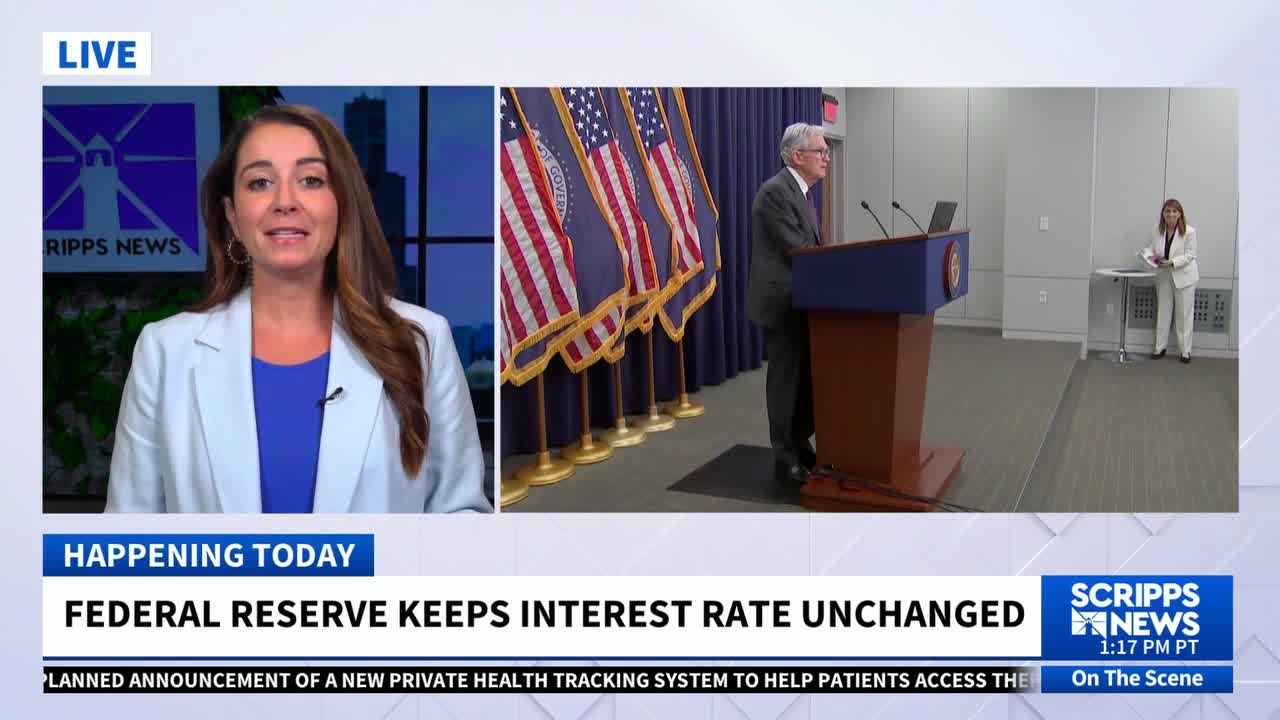The Federal Reserve held interest rates steady on Wednesday despite President Donald Trump’s calls for cuts as the board finished a two-day series of meetings.
President Trump has wanted lower rates to make borrowing more affordable for Americans. However, Federal Reserve Chair Jerome Powell has warned that tariffs are already raising inflation concerns. The Fed also said it is monitoring for potential changes in employment levels.
Currently, the Fed is satisfied with U.S. employment figures amid elevated levels of inflation.
"Uncertainty about the economic outlook remains elevated. The Committee is attentive to the risks to both sides of its dual mandate," the Federal Reserve said in a statement on Wednesday.
The board voted 9-2 in favor of maintaining current interest rates. Wednesday's vote marked the first time in over three decades that multiple members of the Fed dissented.
Governors Christopher Waller and Michelle Bowman, both of whom were nominated by President Trump, voted to lower rates.
"Usually, by the time they get done with the meeting, all 12 of them are usually in lockstep," said Thomas Stockwell, assistant professor of economics at Tampa University. "Most of the time you're gonna see all 12 members vote in favor of a policy action. Sometimes you will see one, maybe two dissenting people. But the more dissenting individuals that you see, the more you start to question, well, does the chairman actually have control over the FOMC?"
On Wednesday just before the rate decision, President Trump continued to criticize the Fed's performance, though he didn't name Powell specifically. President Trump has not yet publicly commented on Wednesday's rate decision.
President Trump announced new tariffs Wednesday on Brazil and India, on copper imports to the U.S. and on certain goods with a value under $800, which could end a practice known as de minimis exemptions that applied to low-cost shipments.
The president has claimed tariffs generate revenue and boost domestic production.
And those tariffs are expected to continue to weigh on Fed decision-making, Powell said, particularly as costs get passed on to the consumer.
"The consumers are paying most of this for now. It's starting to show up in consumer prices," Powell said Wednesday. "We expect to see more of that. We know from surveys that companies feel that they have every intention of putting this through to the consumer."
"I think we've learned that the process will probably be slower than expected at the beginning, but we never expected it to be fast."
RELATED STORY | What is the Federal Reserve's role in shaping US monetary policy?
Federal interest rates reached their highest levels in 2023 and 2024 in over two decades to combat high inflation. Powell has stated the Federal Reserve's goal is to keep inflation to an annualized rate of 2%.
As inflation eased in 2024, the Federal Reserve issued three sets of interest rate cuts, but hasn't made any additional reductions since President Trump took office in January.
According to data released earlier this month, the consumer price index rose 2.7% in the 12-month period ending in June. The inflation rate is 0.3 percentage points higher than May's rate of 2.4%.
"We would be helped if interest rates come down," President Trump said, but acknowledged the Federal Reserve Board would be responsible for any changes.




